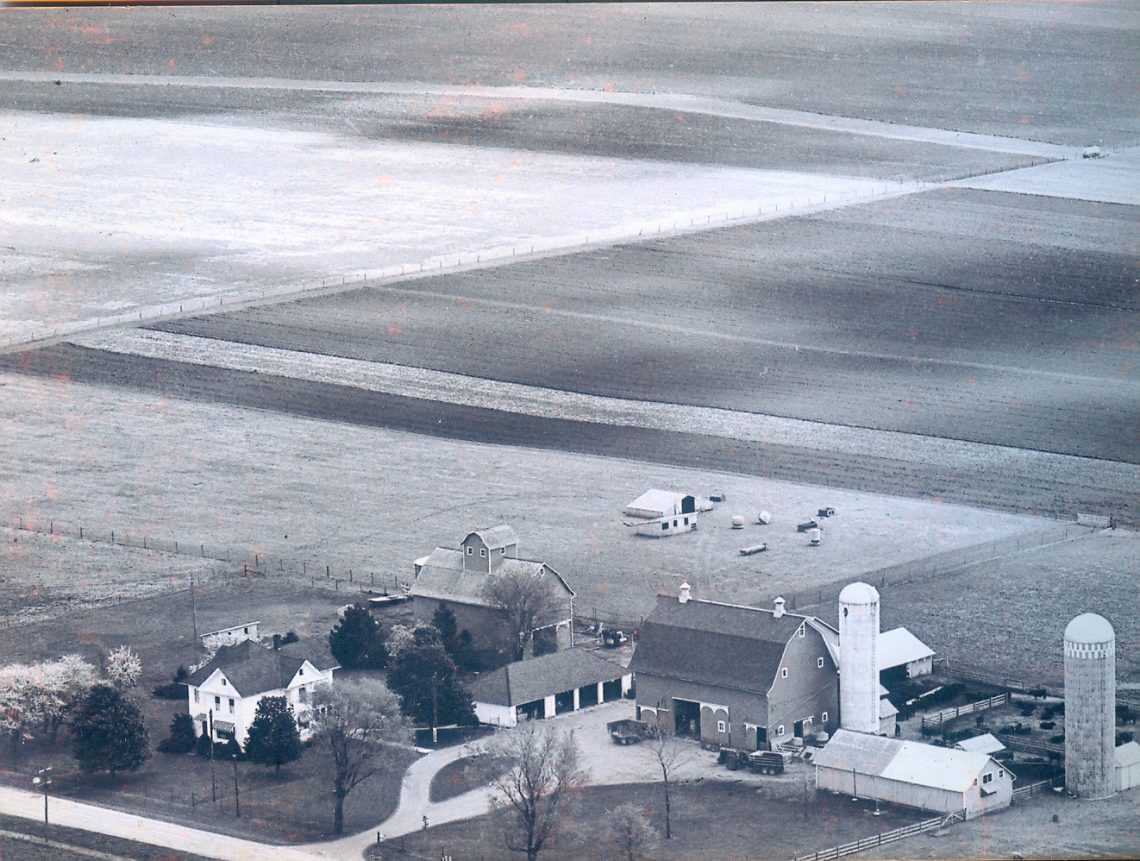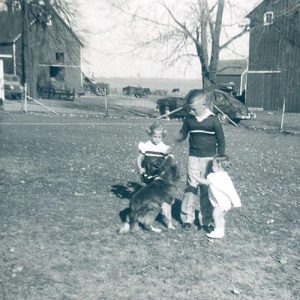
A Guy’s Gotta Eat!
My mother was a farm wife on a 400-acre farm in northern Illinois in the 1950s. She could feed a hungry crew during the harvest and could help in the fields, when necessary. This is the environment in which she decided that her teenaged son needed to learn cooking basics so that he wouldn’t need to marry a woman just to eat. It wasn’t a stretch for me. I had stayed at home alone and had managed to feed myself. I could fry a hamburger and follow a recipe. But my mother wanted more proof that I could sustain myself and make meals over the long run.
Like many in our area, the farm produced corn and oats to fatten 150 beef cattle and a few hundred hogs. We also had chickens, horses, sheep, and a mongrel dog named Pup. The nearest neighbor was a mile distant, and the grocery store was seven miles away. Given infrequent grocery trips, staples required long shelf life. Meal priorities tended toward appetite satisfaction over exotic flavors. Sixty years later, I live in an area with access to farmers’ markets and specialty food shops, peopled with discriminating eaters. I typically prepare the main meal every day for myself and my wife, who has a sophisticated palate and appreciates variety.
Feeding the farmers
 My own tastes developed among a nexus of family farms populated by mostly Scandinavian immigrant families. Going out to dinner often meant attending the Sunday smorgasbord at the local church. It was a meat-and-potatoes 1950s crowd where meals fueled bodies used to wrestling 60-pound hay bales or throwing down a ton of sileage by fork from one of the 50-foot silos that dotted the landscape. The farm wives who prepared those meals often had chores to do around the farm. Some also had jobs outside the home. That meant time spent preparing the meals was limited.
My own tastes developed among a nexus of family farms populated by mostly Scandinavian immigrant families. Going out to dinner often meant attending the Sunday smorgasbord at the local church. It was a meat-and-potatoes 1950s crowd where meals fueled bodies used to wrestling 60-pound hay bales or throwing down a ton of sileage by fork from one of the 50-foot silos that dotted the landscape. The farm wives who prepared those meals often had chores to do around the farm. Some also had jobs outside the home. That meant time spent preparing the meals was limited.
Food availability was hampered by the logistics of the day. Rather than French cheeses and Italian pastas, the typical farm cupboard was populated with shelf-stable staples: cream of mushroom soup, Jell-O, corn flakes, and canned foods that could be quickly and liberally incorporated into a meal for a hungry bunch of farmers. Menus tended to simplicity and bulk. The limited variety on the Midwest 1950s grocery shelves drove farm cooks to a level of creativity driven by a need to quickly fill stomachs rather than inspire the palate. Preparation needed to be simple and efficient.
Cooking lessons
My first cooking lesson was my mother’s beef stew. And we had a big advantage over today’s households. Like almost every farmhouse, we had a big freezer to take both economic and nutritional advantage of what was produced in this breadbasket. In our case, it was prime beef. At least once a year, we’d select one of the best steers, which resulted in about 700 pounds of beef. For her stew, my mother chose a minute steak, a tougher cut that was processed through the slaughterhouse’s mechanical tenderizer before packaging and freezing.
My cooking lesson meant that my mother supervised while I cut one of those minute steaks into bite-size pieces, dredged them in flour and browned them in a frying pan. When adequately browned, I added potatoes cut into stew-size pieces, along with frozen peas. Then she instructed me to add water and a bouillion cube. I’m not sure of the spices, but the kitchen of the day usually included Worcestershire sauce and garlic salt. After simmering for 20 or 30 minutes, the stew was ready to my mother’s satisfaction.
In the ensuing half-century, my meal repertoire has certainly expanded, but much of it retains the core tastes and memories of those early years in the farm kitchens of my mother and grandmother. I still make stews, but they range from my lamb tagine to a chunky Southwest chili to a Vietnamese beef pho. But at its core, it’s still that original stew recipe.
How did you learn to cook – or didn’t you? Please share you stories in comments below.





3 Comments
A WordPress Commenter
Hi, this is a comment.
To get started with moderating, editing, and deleting comments, please visit the Comments screen in the dashboard.
Commenter avatars come from Gravatar.
Ralph Anderson
Good afternoon.
My nephew (a year younger than I) and I both started our lives in the mid 1940s in Rockford, and my sister and brother-in-law operated a farm just east of Malta from 1948-1960. We spent our summers on that farm and did our share of tractor driving and loading hay wagons and stacking in the hay loft. Probably more than our share of eating too. On the trip from Rockford we would pass and sometimes stop at what you have confirmed was Sipes Corner. My recollection is good pies.
My wife and I share your love of Scotland and Edinburgh (though we’ve only been once a couple of years ago) – we need to get back to finish going through the delightful museum there and do the pub crawl. I’ll flog your recipes around to the family chefs.
Regards from northern Virginia,
Jim Seavey
Just met you last night, and hope your venture today is on it’s way, but not too much on it’s way. I also have been the main cook for the last 11 years for my family of 2. I did not learn to cook from my mother, but rather what not to cook. Her depression era default was efficiency, so taking the same 50’s grocery store staples and virtually zero fresh ingredients, she’d toss everthing in the pressure cooker until it was mush. I never tasted crisp string beans or broccoli until I was in my 20’s. She did hand me a Fanny Farmer’s cook book, and my wife corralled a couple of books by Adele Davis. Joy of Cooking (started as a Unitarian Church project) saved me from blackstrap molasses, but I still cook pancakes with yeast. I’m not much of a researcher, but tend to work up variations on the fly of a few standard staring points, stew, stir fry, grill. We have evolved into pescatarians and whatever someone who eats occasional bits of chicken is called, never touching large land animal meat. I have been influenced by travels and by my two sons and their partner’s culinary proclivities (Ask me about Thai food or foraging). Unlike you, my spousal unit prefers consistancy. Tonight I’ll cook pizza with hardboiled egg slices and halved quartered artichokes (frozen, canned if desperate), with mushrooms, red peppers and onions, inspired by a hole in the wall pizzaria in Florence in 1973. And Adele’s quick start whole wheat dough (with fresh basil and garlic folded in) and mozzerella put on at the last minute. This is a command performance.